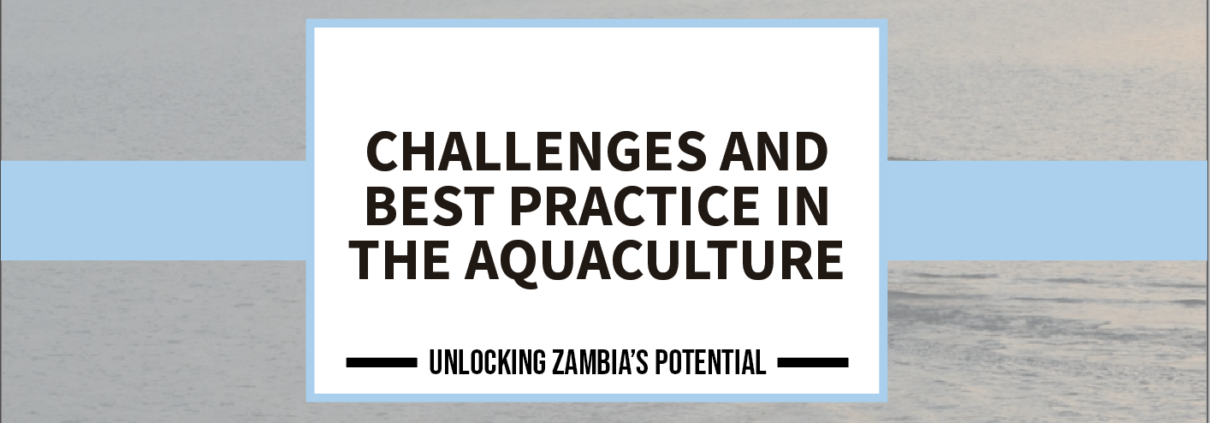The sub-sector has over the recent years experienced development making Zambia one of the leading countries in fish farming in the region. Despite these developments, the sub-sector has still remained in its infancy stage if compared to other sub-sectors in the agricultural sector such as the crop and livestock sub-sectors. The following appear to be some of the factors constraining the sector:
- To begin with, the aquaculture sub-sector is guided by inadequate policy framework, although Government has developed an aquaculture strategic plan, this plan has not been fully implemented to facilitate for the management of the sector which could enhance fish production. It is therefore required that Government works with relevant stakeholders to implement best aquaculture management practices which will further develop the sub-sector. With the introduction of the Ministry of Fisheries and Livestock, there exists an opportunity for improved policy implementation and improved support.
- Secondly, there have been low levels of investment in the aquaculture sub-sector when compared to other sectors in the economy. However, there is need for a deliberate paradigm shift that would change the development of the sector through research and extension services for meaningful aquaculture development to be actualized spearheaded by the Ministry of Fisheries and Livestock.
- Lastly, there is fragmented coordination amongst stakeholders leading to delays in the implementation of aquaculture strategies, interventions, and policies. It is therefore important for the Ministry of Livestock and Fisheries to work together with different stakeholders to ensure the effective implementation of initiatives that will increase aquaculture production and productivity.
BEST PRACTICE IN AQUACULTURE IN AFRICA
There are a number of countries Zambia can learn from best practice for a successful aquaculture sector such as Egypt. The Egyptian aquaculture sub-sector is currently number ten in the world in terms of fish production and the largest in Africa. This status has been due to a number of interventions that the Egyptian government has implemented in the last four decades targeted on reducing fish imports due to a reduction in capture fisheries and the realization of the economic opportunities of aquaculture. In 2010 the Egyptian government designed and implemented a National Aquaculture 2030 Strategy, this strategy focused on the development of freshwater aquaculture with an emphasis on cage fish farming and desert fish farming.
In order to achieve the 2030 strategy, the Egyptian government implemented a wide range of policy interventions such as;
- Efficient use of fresh water for fish production through the recirculation aquaculture method of rearing fish, rather than using open ponds. The choice of this type of fish farming was considered the best for increased productivity because it is done all year round, low water requirement and little space.
- Financing for aquaculture- the government has made strides in financing aquaculture, although challenges still exist for small-holder farmers to access finance from formal financial institutions when compared to informal credit providers.
- The Government has created an environment where it has licensed the establishment of fish feed mills within the country for feed production.
From the Egyptian case, Zambia can adopt the policy implementation of an aquaculture strategy to guide the sub-sector development and the use of the recirculation aquaculture system which will ensure whole year-round fish production which will cushion the gap in supply caused by the fish ban.
Download the booklet here:




